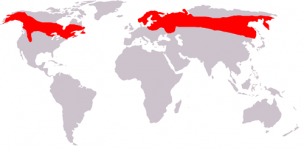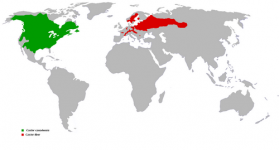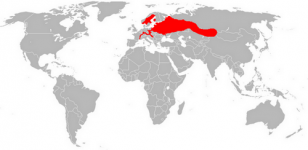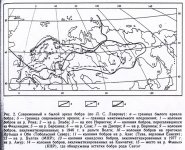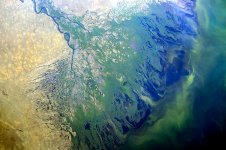There's no elk(*h₄ólk̑is)
View attachment 7779
and beaver(
*bʰébʰrus)
View attachment 7781
Moreover, the beavers were probably sacred and cult animals of Indo-Europeans.
129. 'She is clothed with garments of beaver, Ardvi Sura Anahita; with the skin of thirty beavers of those that bear four young ones, that are the finest kind of beavers; for the skin of the beaver that lives in water is the finest-colored of all skins, and when worked at the right time it shines to the eye with full sheen of silver and gold. (c) Avesta
Ardvi Sura Anahita (Godess from Avesta) probably has avatar Volga river.
Nice!
What is special about elks? What have they to do with PIE? Elks/reindeers are part of the 'deer' species. An elk is just more addapted to a colder climate. An deer does exist on the Iranian Plateau and Zagros Mountains (Kurdistan). Also, the Iranian Plateau borders Central Asia and China. Elks do exist in Central Asia and China. So why do you think that 'elks' are only exclusive to Volga? Btw, 'elk' in Kurdish (West Iranian) has a different name: "
Şivira kedî"
https://ku.wikipedia.org/wiki/Şivira_kedî
About the 'beaver'.
There are 3 possibilities.
a) it has been wrongly translated. Maybe they meant 'tiger' since it has been called almost the same.
b) beavers existed on the Iranian Plateau, but they are extinct now. Like this article is suggesting. :
http://www.iranicaonline.org/articles/beaver-castor-fiber-l
and according this source: "
Family Castoridae: beaver. Once resident in Iran, as recently as the Neolithic, it has reentered the country from the Caucasus."
http://www.iranicaonline.org/articles/mammals-01-iran-afghanistan-ca
or
c) remember that Zoroastrian Avesta was written by the East Iranian folks. They were already nowhere near to the PIE roots (Yamnaya). And especially NOTHING to do with Slavs. According the East Iranian folks, their "ARYAN'' URHEIMAT was somewhere on the Iranian Plateau. They mention even the area/place in their book.
I doubt Avesta has anything to do with Volga. Avesta was actually very close and similar to the Mesopotamia. Those who wrote Avesta were actually already different from the PIE source.
East Iranian folks lived around BMAC. BMAC borders Central Asia and even China. Why is it not possible that they were know with this beaver mammal from their neighbouring areas like Central Asia and China.
There was already 2000 years of space and time between those East Iranian who wrote Avesta and late PIE from Maykop/Yamnaya.
Actually there is less of time and space between East Iranians of BMAC who wrote Avesta and Iranians who lived in the tenth century.
Remember that the '
beaver testicles' were used as medicine in Iran already during in the tenth century.
http://www.sciencedirect.com/science/article/pii/S037887410200377X
Do you think those Iranians who used 'beaver testicles' as medicine came from Volga? Same can be explained by East Iranian from BMAC. Has absolutely nothing to do with Volga.
Beaver is native all over the northern part of Eurasia, Central Asia up to China. And those regions are neighboring ancient BMAC where East Iranian folks were from.
I mean peacock is very sacred in my native (current) West Iranian religion. And nowadays peacock is also not really native to Kurdistan. Peacock is native to Gedrosia/India. That doesn;t mean that my religion is from India. My religion (the Yezidism) is actually native to the Mesopotamia.
+ There were 2 developments of PIE. Ancient one around Leyla-Tepe that migrated into Maykop and the later one was around Maykop/Yamnaya. It is possible that the beaver was adopted into the Iranian vocabulary later from Central Asia or maybe from the Caucasus, though. Or maybe it is from the NEOLITHIC times...


